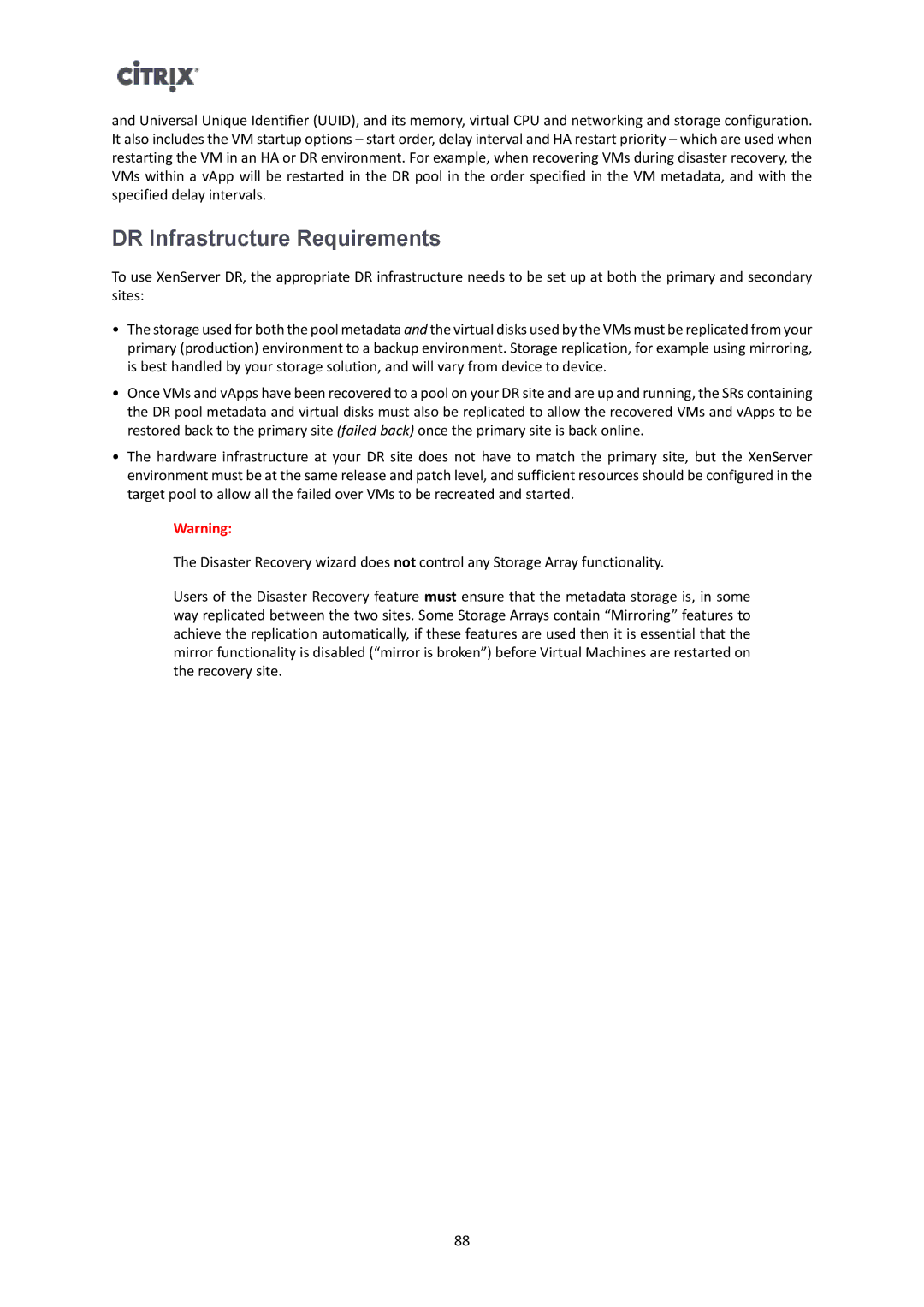and Universal Unique Identifier (UUID), and its memory, virtual CPU and networking and storage configuration. It also includes the VM startup options – start order, delay interval and HA restart priority – which are used when restarting the VM in an HA or DR environment. For example, when recovering VMs during disaster recovery, the VMs within a vApp will be restarted in the DR pool in the order specified in the VM metadata, and with the specified delay intervals.
DR Infrastructure Requirements
To use XenServer DR, the appropriate DR infrastructure needs to be set up at both the primary and secondary sites:
•The storage used for both the pool metadata and the virtual disks used by the VMs must be replicated from your primary (production) environment to a backup environment. Storage replication, for example using mirroring, is best handled by your storage solution, and will vary from device to device.
•Once VMs and vApps have been recovered to a pool on your DR site and are up and running, the SRs containing the DR pool metadata and virtual disks must also be replicated to allow the recovered VMs and vApps to be restored back to the primary site (failed back) once the primary site is back online.
•The hardware infrastructure at your DR site does not have to match the primary site, but the XenServer environment must be at the same release and patch level, and sufficient resources should be configured in the target pool to allow all the failed over VMs to be recreated and started.
Warning:
The Disaster Recovery wizard does not control any Storage Array functionality.
Users of the Disaster Recovery feature must ensure that the metadata storage is, in some way replicated between the two sites. Some Storage Arrays contain “Mirroring” features to achieve the replication automatically, if these features are used then it is essential that the mirror functionality is disabled (“mirror is broken”) before Virtual Machines are restarted on the recovery site.
88
